It's been a couple of weeks since Harley-Davidson unveiled its 2018 Softail models, which folds the previous Dyna and Softail cruiser platforms into one new lineup.
We were fortunate enough to have a little jump on the news, allowing us to get several different pieces published on the announcement of the bikes. Cycle World Technical Editor Kevin Cameron wrote a technical preview and illuminated the thinking behind the new platform, Editor-at-Large Peter Egan presented his initial riding impressions after saddling up on the 2017 and 2018 models back to back, and Cycle World Editor-In-Chief Mark Hoyer wrote an essay on the death of the Dyna.
After days and days of the internet freaking out about Harley-Davidson's certain demise following such a disastrous move, we followed the piece up with an interesting op-ed from Cruiser's Morgan Gales, presenting the argument that the FXR, like the new Softails, was met with scorn upon its release — only later to become exalted to mythical-creature levels of reverence.
Only time will tell if Harley-Davidson's forward thinking will take it to the grave (not likely) or add decades of longevity to the brand and numbers to its riders. It will also take time to see if the redesign and improved performance truly help convince buyers to sign on the dotted line. But the other part is that more butts need more seat time before any of the internet hate can be validated or dismissed.
Like the rest of moto culture, we were curious about hopping on Harley's eight new models to experience them for ourselves on real roads. The news and numbers looked great, but the butt-dyno knows best.
Although our two days spent riding the new bikes in real-world conditions couldn't possibly provide the depth needed for a full review, it does help us get a better grasp on what exactly this big change in Harley-Davidson's cruiser models means for the bikes and would-be riders.
Basic Mechanics: They put us in groups of four riders and assigned us to four bikes on Day One, four more on Day Two. We rode all eight models, some with the 114 variant of the Milwaukee-Eight engine and some with the 107. We each got time on two bikes before lunch and two after, although the mileage on day one was split a little funky which meant for much more time on some bikes and less on others.
PLATFORM-WIDE THOUGHTS
Before I jump into individual models, there are a couple of things I thought about the new platform as a whole, and it's more clear to get it down here than to repeat for each bike.
My biggest question going into the ride was the brakes. Some of these models previously had dual discs up front, but only the Fat Bob gets such a treatment now. While my basic rule of thumb is that anything over 450 pounds or so should get two front brake discs, I was actually incredibly impressed with the stopping power of all of the bikes I rode.
I did a number of braking drills on most of the models, using all front, all rear, and the full application of both to stop the motorcycle; the brakes did an impressive job getting me slowed down. Power versus lever effort was great, allowing me to lock the front brake (only briefly, as ABS immediately kicked in) with two-finger application.
Better yet, initial bite was decent and brake feel was lovely. I'd still add a second disc if I bought a single-disc model, because I believe it would improve modulation at impending lockup. But the performance of the single-disc system was a nice surprise.
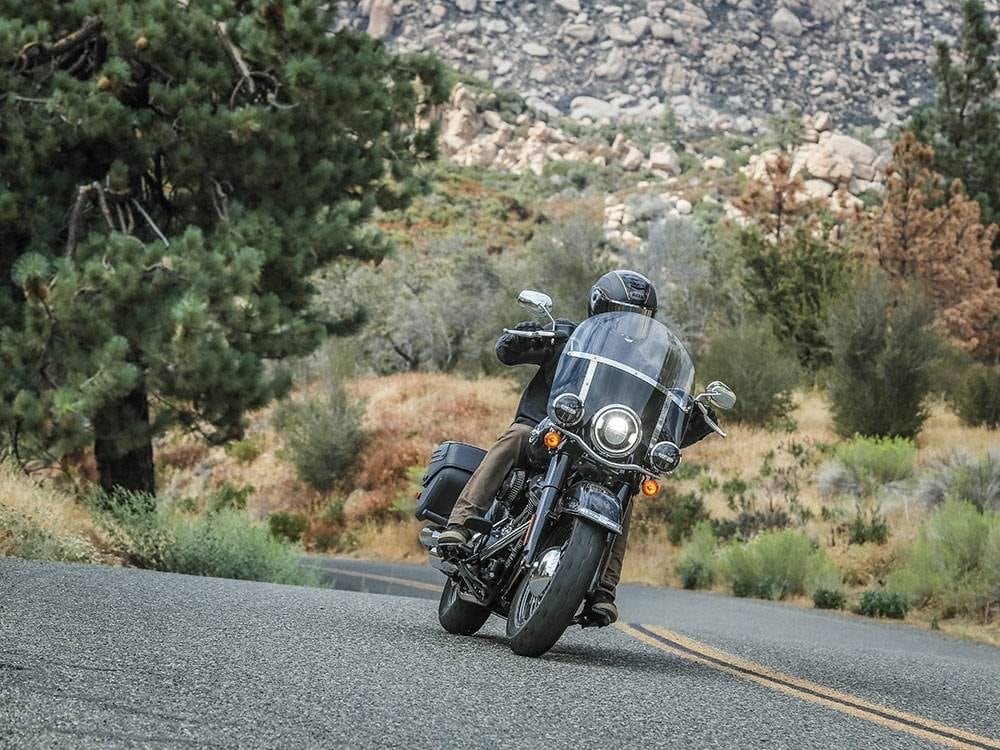
Increased chassis stiffness is also quickly noticeable. The mountain roads we were on were abused and weathered, with tar snakes, gashes from previous crashes, and cracks from sitting atop hillsides that have a tendency to roll around in their sleep. Riding over those blemishes — or the cutouts for the center-lane reflectors — would have flummoxed the frame of the previous generation bike and sent huge waves through the chassis. But these new bikes remained poised when I found myself unable to avoid bumps, even at maximum lean angle.
The new shock is nitrogen-charged and features a progressive-rate spring, a massive upgrade over the old twin-shock system on the Dynas or pull shocks of the outgoing Softails. The only bike that was jarring for me suspension-wise was the Fat Bob, but my limited seat time meant I couldn’t fiddle with the preload. Jury's out on that one.
Finally, both the 114 and 107 versions of the Milwaukee-Eight are wonderful, and that second counterbalancer does an incredible job at cutting vibration. The power bump between the two displacements was noticeable, but not so much so that you necessarily need the 114 over the 107 (average of $1,500 markup on the four models it's available as an upgrade). The one big advantage of the 114 is that the extra displacement comes from stroke, not bore, which means you can drop on a big-bore top-end to boost power even more.
Most people will be happiest with either the smaller 107 or buying the 114 and adding a Stage III kit to bump up to 117.
And now, the bikes:
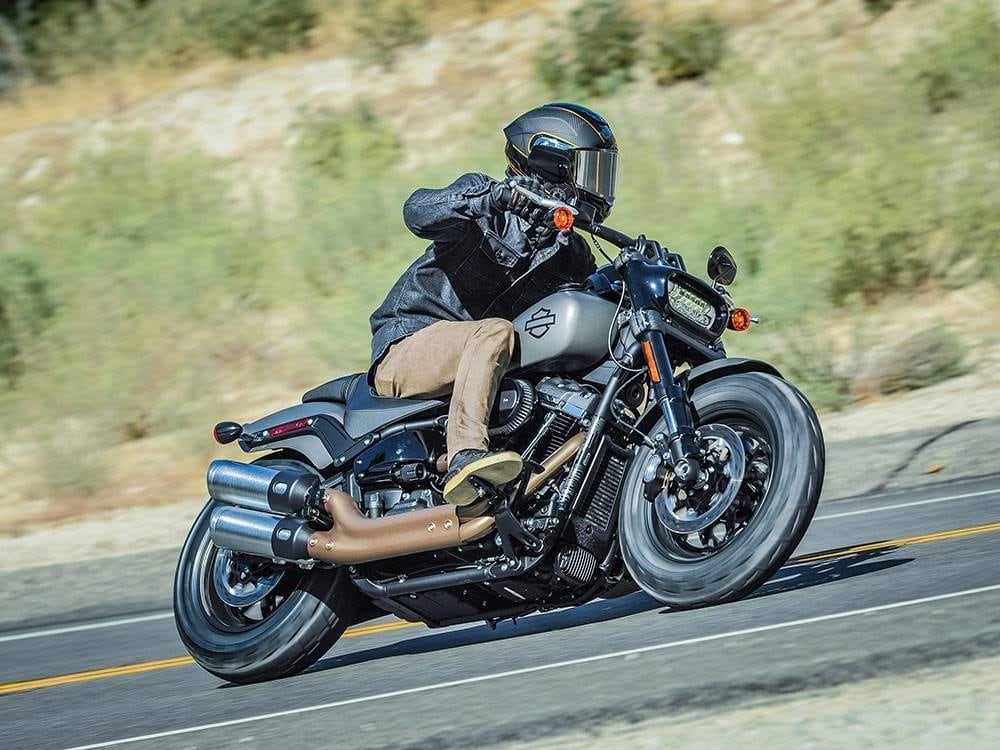
2018 HARLEY-DAVIDSON FAT BOB 114
The first bike with my name on it was the one readers seem the most interested in: the Fat Bob 114. Part zombie-apocalypse escape mobile and part sport cruiser/standard/power-thing, the 2018 Fat Bob has been touted as proof of The Motor Company's new turn toward performance.
It was the bike I was the most excited to test given my sport-minded background, though that was also a big part of why it fell a little flat for me.
As with anything, the hype or expectations surrounding something have a dramatic influence on the overall perception. In the same way that I kept waiting for a big "holy crap" moment in “No Country For Old Men,” I kept waiting for the Fat Bob to find its element — which it never did.
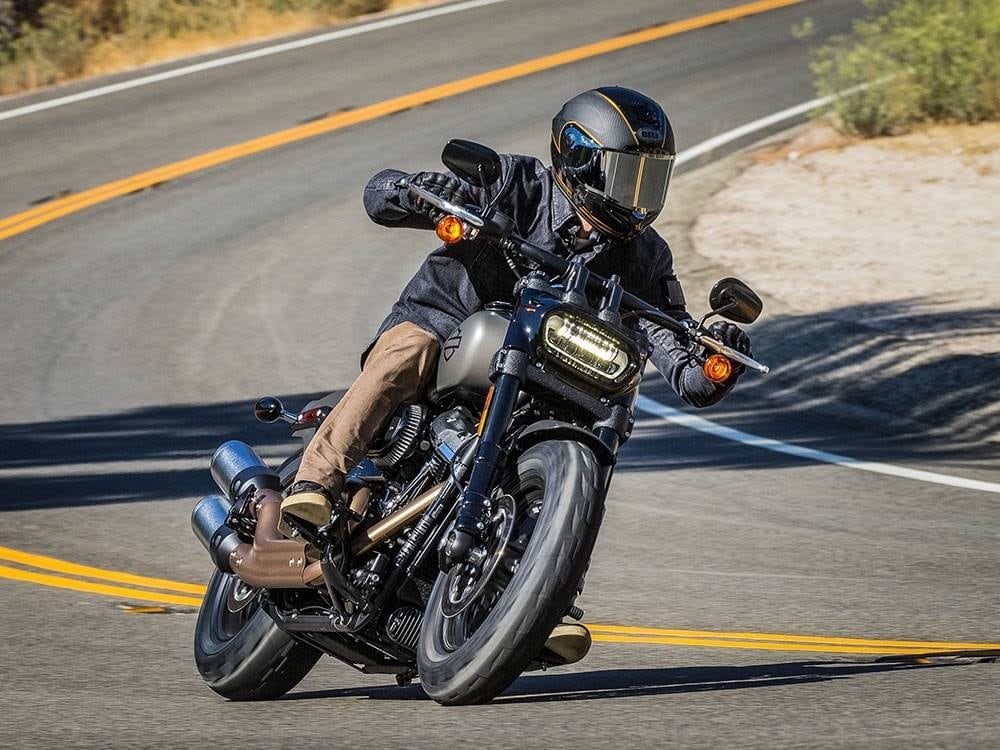
The Fat Bob is surely the sportiest bike in Harley-Davidson's lineup, but that doesn't mean I would call it sporty. The suspension is nice and taut (though jarring for me on our short freeway stint), and the cornering clearance is better than on anything else currently available from the brand, but the riding experience reminds me of my first time riding the Sportster Forty-Eight.
Both bikes look gorgeous and seem like the answers to questions we've been asking of The Motor Company, but the execution is harmed by catering too heavily to the aesthetic goals of the bike. In the case of both, the riding position and fat front tire dramatically impact the handling for the worse. Harley-Davidson said forward controls were used on the Fat Bob to make room for the pretty exhaust, but I'd have much preferred mid-mounted foot controls on this "high-performance" cruiser.
I will say that — as the only bike in the lineup with an inverted fork and twin front disc brakes — stopping performance is excellent for a bike of its size and there is little to no brake dive under hard application.
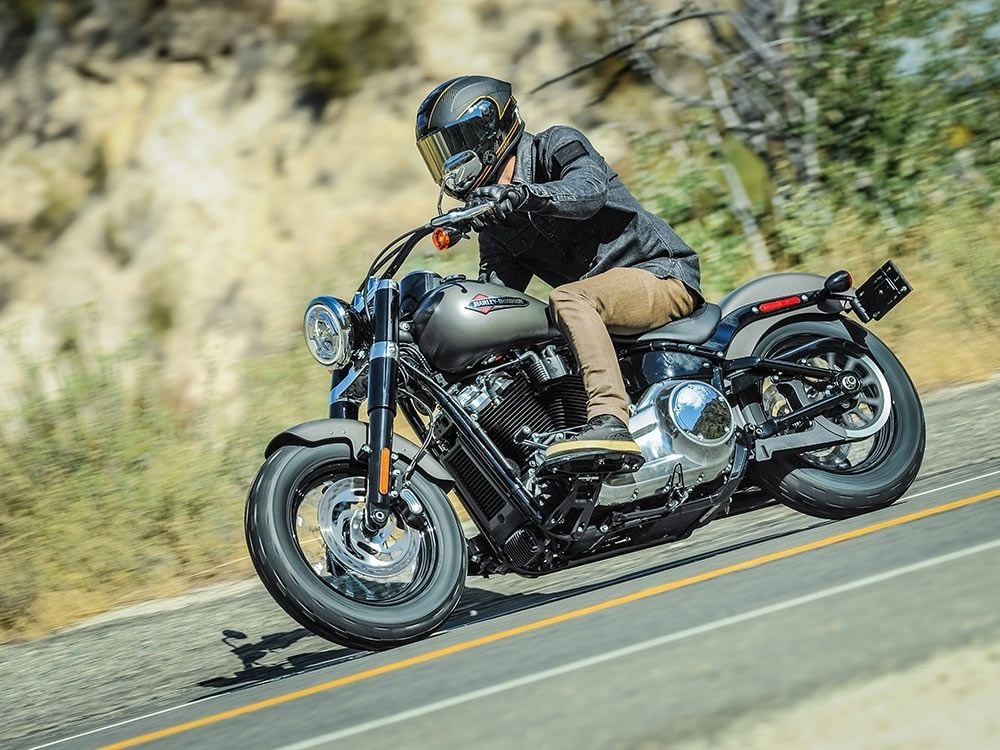
2018 HARLEY-DAVIDSON SOFTAIL SLIM
Next up was the Softail Slim, one of Harley's more stripped-down standard V-twin cruisers. Despite having low footboards, the Slim surprised me with decent cornering clearance. It shares its components with the Deluxe, save for a slightly lower seat, but it oddly felt as though it had the highest center of gravity as well as the heaviest steering of any of the models.
It wasn't so much that it took forceful initiation like the bikes with fatter rear tires, but you just felt like you were attached to this heavy pendulum and you transitioned from side to side. The heavy handling contributed to a lumbering nature that I actually sort of enjoyed, although this wasn't appropriate for the mountain roads we were riding.
I appreciated the clean and uncluttered styling of the classic Slim, and I thought the Hollywood bar and massive bucket light up front looked exceptionally nice. Whereas some of the bikes beat you over the head with the styling, the Slim feels minimal and tasteful. The Slim seems like a perfectly fine motorcycle for someone looking for the classic cruiser experience without a lot of styling.
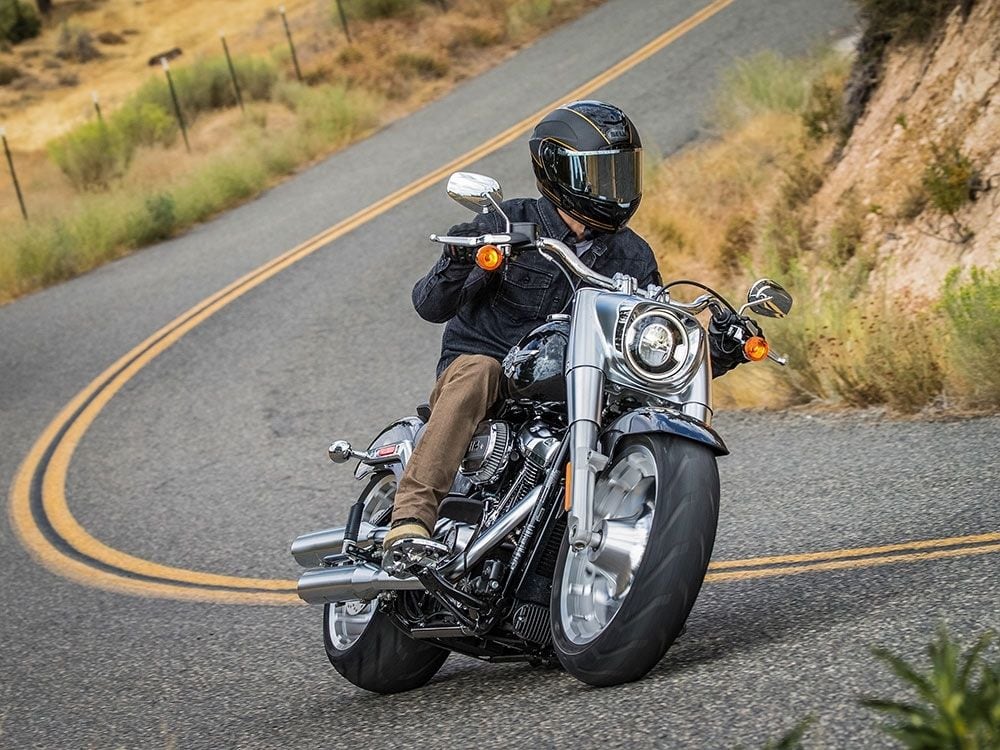
2018 HARLEY-DAVIDSON FAT BOY 114
The Harley-Davidson Fat Boy is one of its most recognizable and most loved motorcycles. It became an icon when Arnold Schwarzenegger finally found a pair of pants and found one sitting outside of a bar upon arriving back in time to find John Connor in “Terminator”; the Fat Boy became one of Harley's best-selling models. Even my chiropractor has one.
The Fat Boy is also not for Sean. Harley nailed its attempt to "make it look like it was machined from a mountain of billet," and the headlight nacelle, sculpted fork tubes, solid wheels, and massive 240mm-wide rear tire stay true to this bike's heritage, while the new frame and motor improve the ride — but it's all just so much.
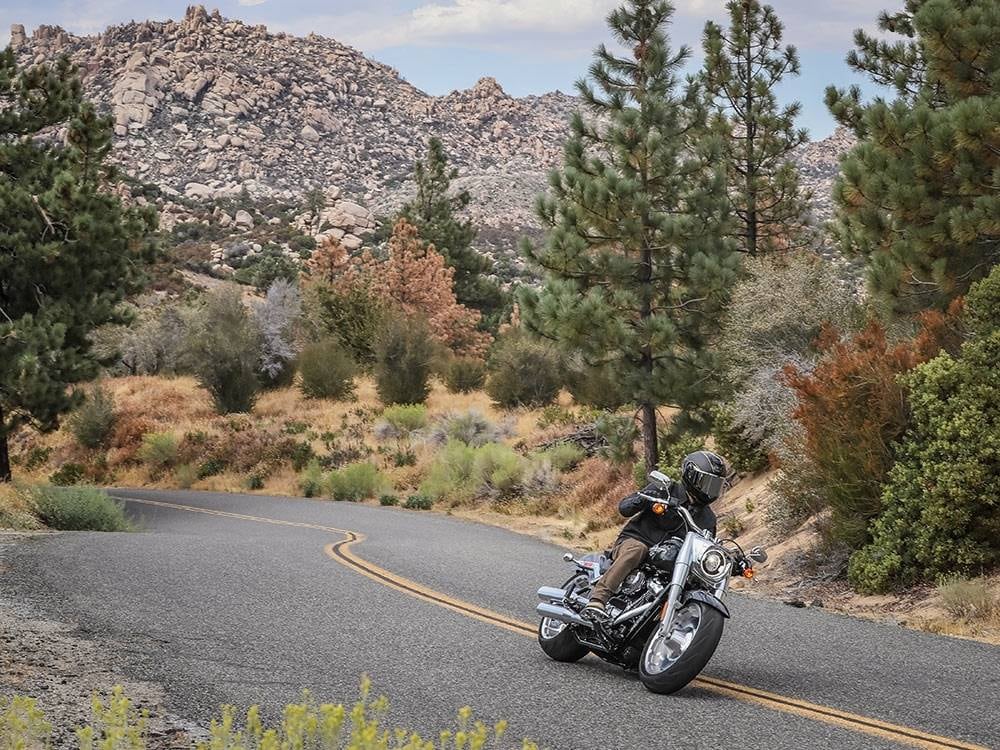
The bike fights tipping into turns like a 5-year-old fights nap time, and the floorboards touch down quickly. Among all the bikes I rode over the two days, the Fat Boy was also the most eager to stand up when trail braking, to the extent that I almost had to give up on most of my trail braking efforts.
I will give it points for comfort, because the bike fit my 6-foot-something frame well and was a peach when riding in a straight line.
The Fat Boy is not my version of Americana (we'll get to what is), but if you dig the styling and do lots of miles in straight-ish lines, you'd be hard-pressed to find fault with the bike.
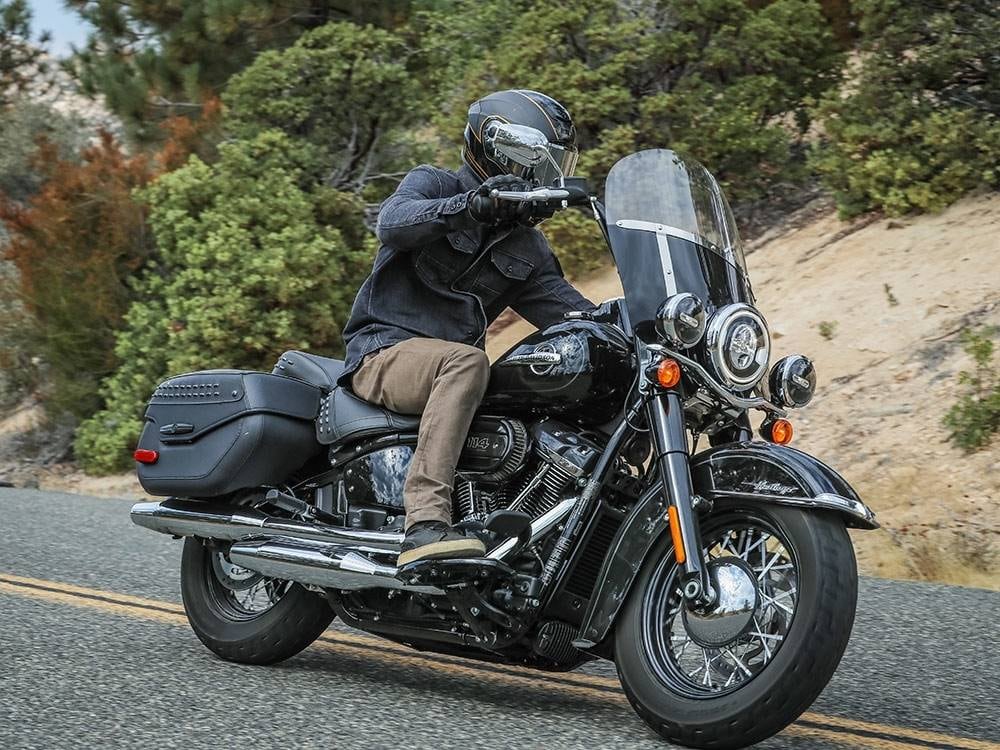
2018 HARLEY-DAVIDSON HERITAGE CLASSIC
The final bike I rode on the first day was also my favorite, despite only riding 11 miles on it. Harley would never admit it, but the Heritage Classic has been viewed by lots of the V-twin world as a touring bike "lite" and kind of a turd. Floorboards were known for dragging with any deviation from a straight line and the styling missed for most people.
The new chassis, motor and styling work well for the 2018 Heritage, however, and riding it was a highlight for several of us on the trip who were surprised by its handling and ability to hide its weight.
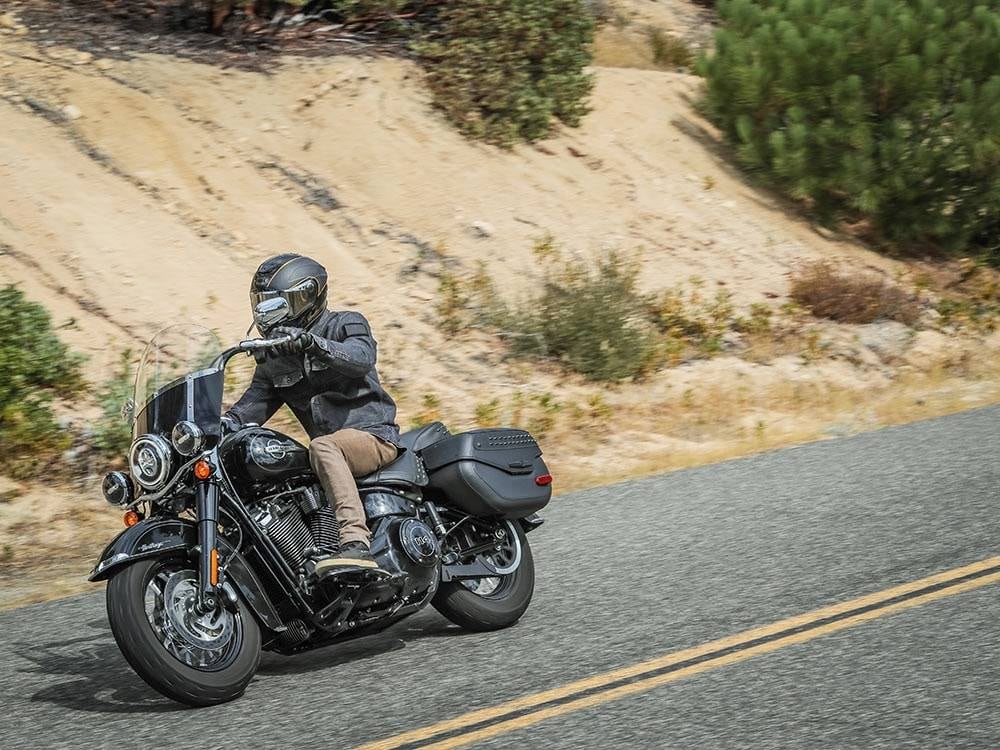
The blacked-out treatment on the lights, fork, windscreen and motor really change the aesthetic vibe of the bike, and the new bags work well and keep a low profile.
To my weird brain, it felt like the Ducati Hyperstrada of Harley's lineup. Smaller than the "real touring bikes," it was easy to maneuver for the tight stuff or around town but comfy to slog lots of miles on — albeit with less packing capacity. As a classic-looking daily rider for someone who prefers a long trip or two, the Heritage Classic would be an ideal choice.
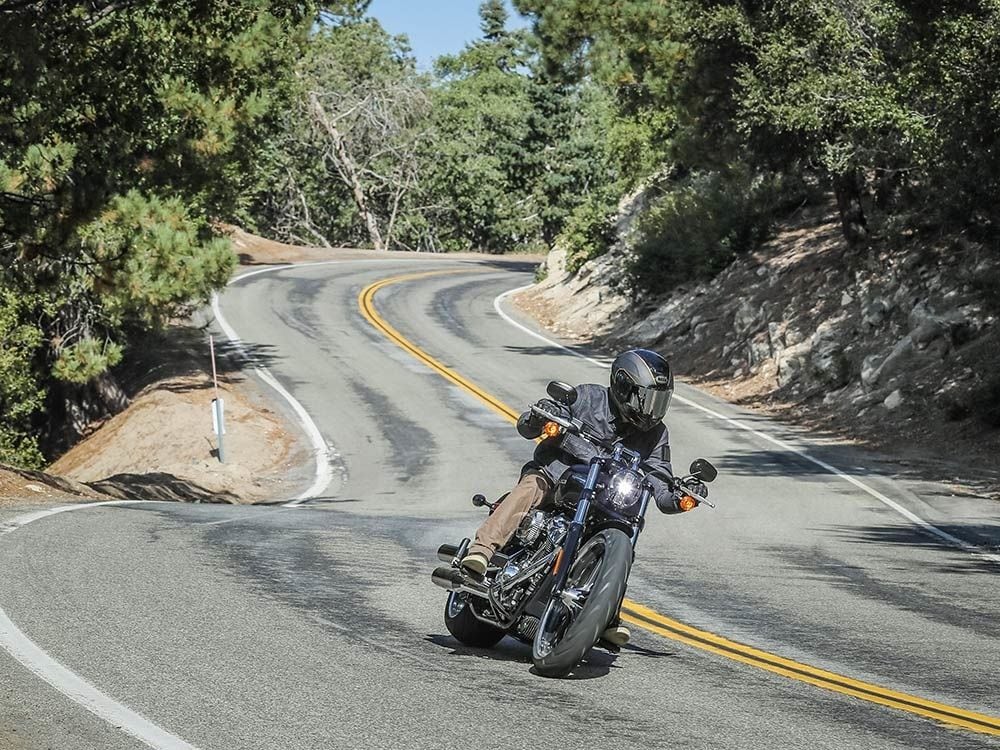
2018 HARLEY-DAVIDSON BREAKOUT 114
Day Two began with my least-favorite bike of the group. A 240mm-wide rear tire, 21-inch front wheel, a vertically lit headlight, 34-degree rake, and drag bars that aren't very comfortable and ensure your access to the levers are impeded by the mirrors are not a recipe for success in my book.
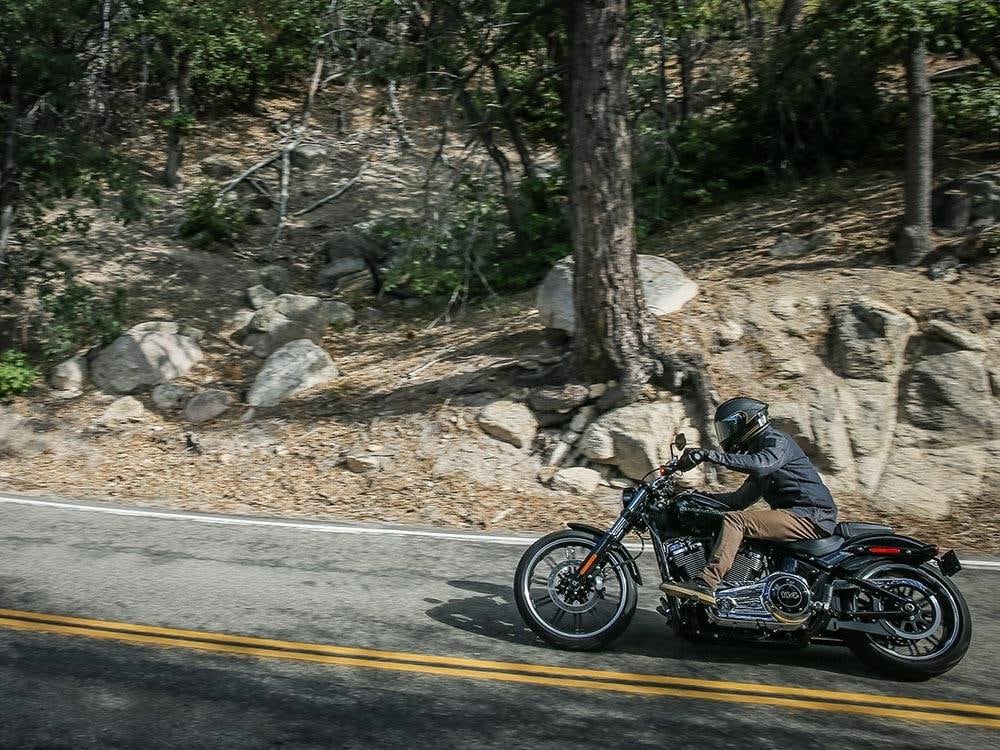
To me, the Breakout is for the buyer who loved Orange County Choppers builds but doesn't have the money to buy a $100,000 custom bike or knowledge and time to do it themselves. The fact that I am not that guy, or that that guy exists, is part of the beauty of motorcycles.
The one highlight of my time on the Breakout was that it, over the other bikes I preferred, really reflected how well these bikes are designed and engineered. The Breakout handled far better than it should have given all the factors working against it, and I was able to keep a far faster pace than I expected on it.
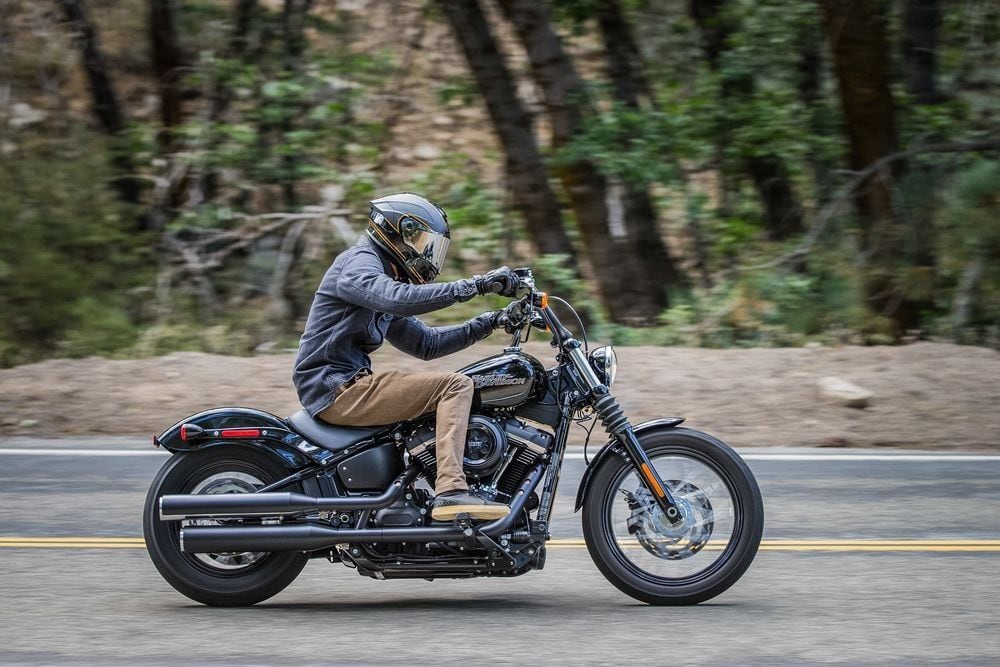
2018 HARLEY-DAVIDSON STREET BOB
The Street Bob was like a breath of fresh air after spending so much time on bigger cruisers. We had a 2017 model in until just recently for our cruiser comparison, and I spent a good amount of time on it for the review and liked the bike a lot. I just wished it handled a little better before I could love it.
The new Softail frame is 91 percent stiffer than the outgoing Dyna frame, and it really shows in the Street Bob. The bike feels much smaller and lighter than the outgoing version despite the bike only losing 17 pounds (10 of which is gas), whether you're picking the bike up off the side stand, sitting on top of it, or cranked over in a turn.
The Street Bob feels like a Sportster on steroids (or what I've always wished the Sportster was). It’s nimble around town and easy to maneuver through tough spaces, but has enough power to get through traffic or have fun when the roads get bendy.
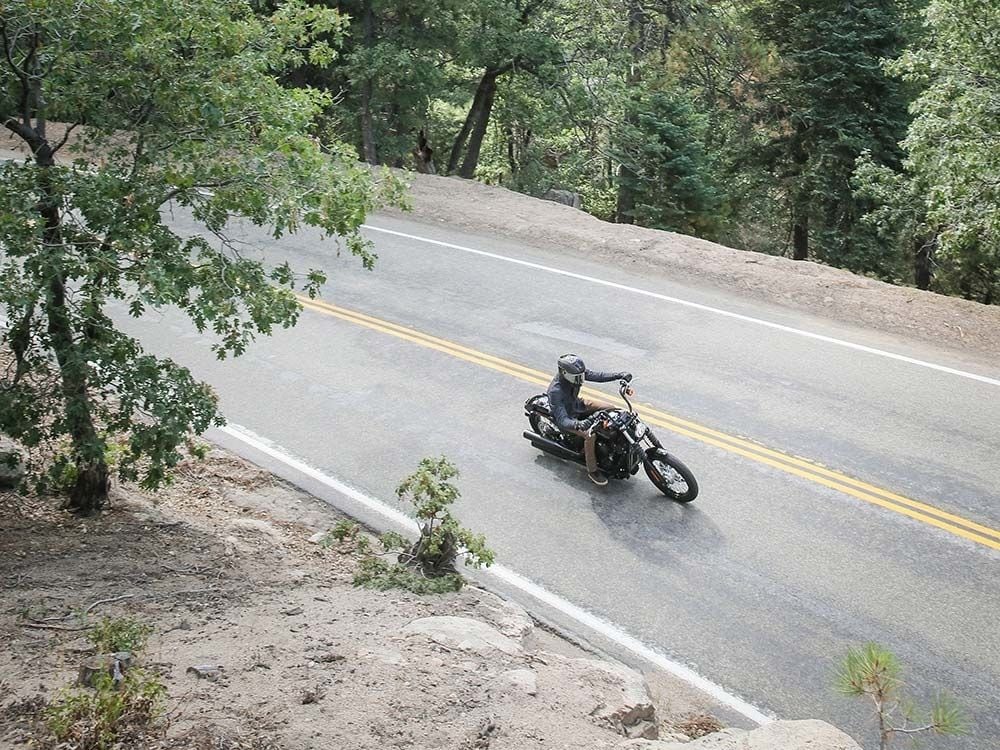
The under-bar mirrors actually work well and look nice in this application, as does the single front disc brake. I was fortunate enough to be on the Street Bob for a particularly fun stretch of road along the ridge of the mountain when our ride leader decided to pick up the pace. I was able to hang off the bike and trail brake like I was riding a naked bike, until I began to shear pegs and frame mounts.
My only complaint was the seat, which was too soft and too small to let me really feel like I was in much of a pocket. My butt was quickly sore from the spongy padding and the lack of space to move around.
After a decent amount of time on the Street Bob, it's easily my favorite bike of the bunch and the first one I'll be bothering the nice folks at Harley-Davidson for more ride time.
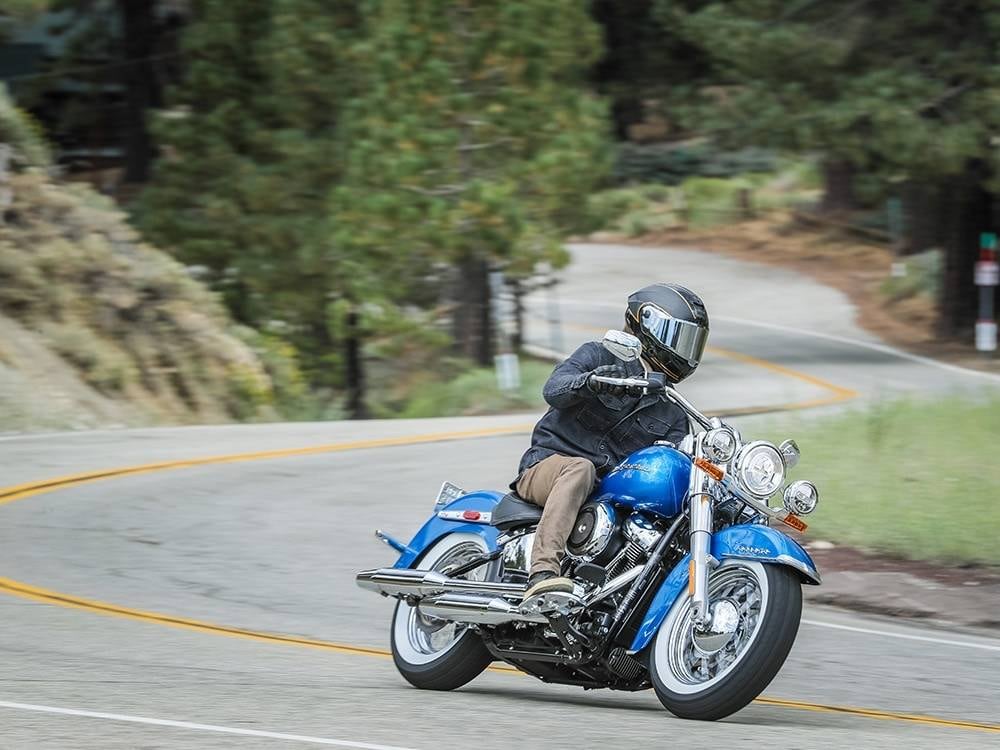
2018 HARLEY-DAVIDSON DELUXE
Next, I went from a bike targeted at arguably the youngest audience to the one targeted at the oldest, moving to the Harley-Davidson Deluxe.
The Deluxe is draped in chrome and, with its whitewall tires, swoopy fenders and three massive headlights, looks like something straight out of “Grease” ... At least until a closer look reveals LED lighting all around (the coffin-style tail light is a nice touch).
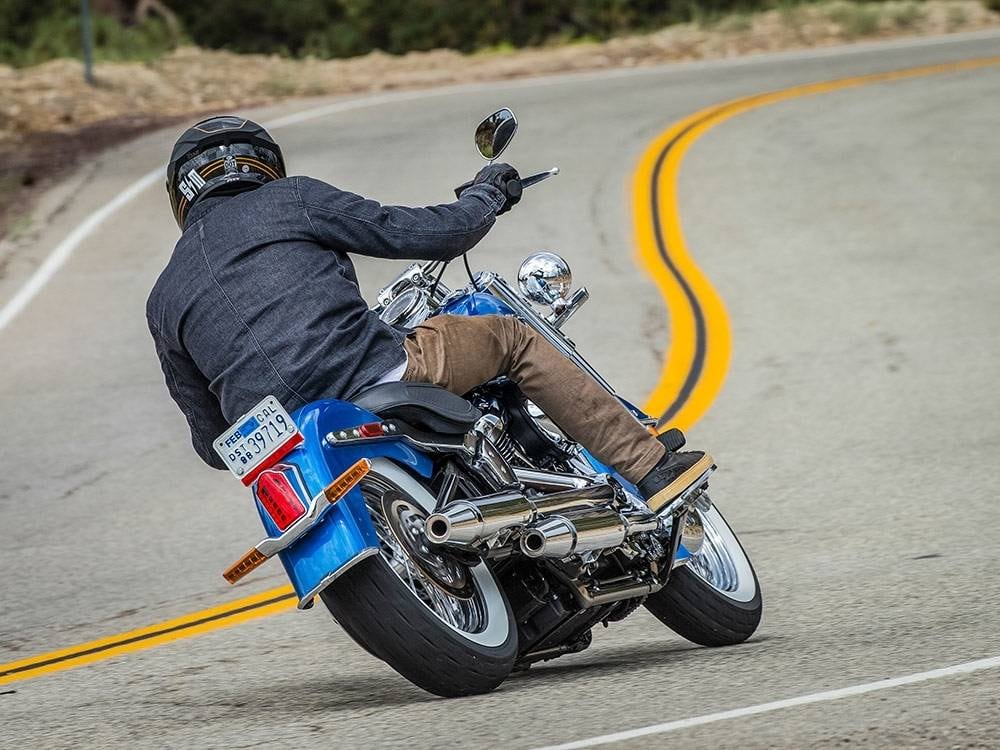
While the Deluxe is another bike that isn't exactly what I would consider my thing, I really enjoyed riding it. The swept-back bars and solo seat both look beautiful and are incredibly comfortable. The rider triangle is slightly different than the Slim, a bike it shares suspension and geometry with, and sitting a little more on top of the bike helps the rider feel more on top of the center of gravity.
If I were looking for some classic Americana, I'd probably opt for the Heritage.
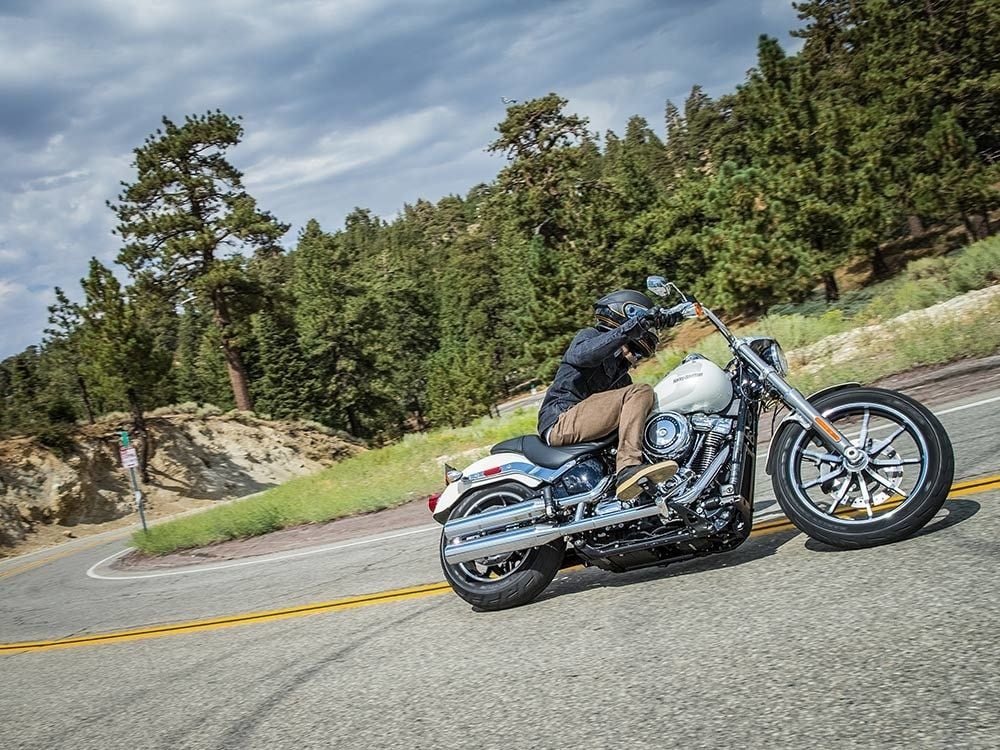
2018 HARLEY-DAVIDSON LOW RIDER
The Low Rider has always been a popular model with the custom scene because it has mid feet controls, and Harley's placement of the gauges on the tank means swapping bars is extra easy.
I've tried to ride several iterations of stock Low Riders, and always found them awkward. The previous bike and its multi-point adjustment bars never fit me quite right and always left me in a half ab-crunch riding position that never made much sense. But I've ridden Hot Bike’s Jeff Holt's builds and loved them.
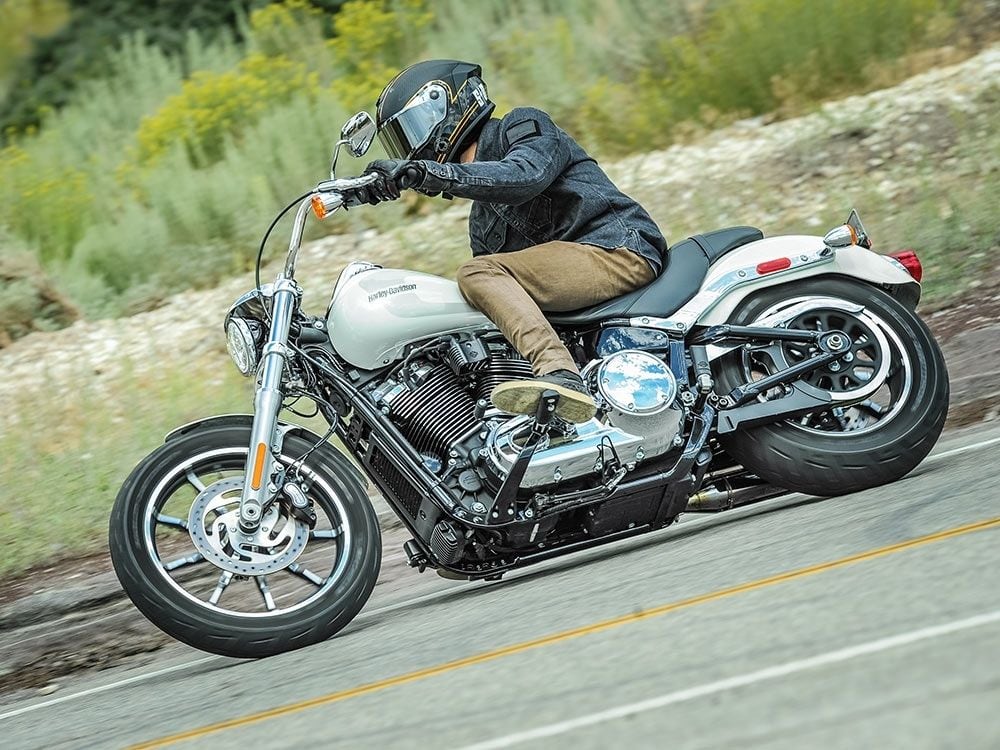
I was surprised when Holt mentioned that this new Low Rider was his favorite of the group, so I was excited to end my two days of riding this particular bike — only to have the same problems I've had in the past. The Low Rider was the most awkward of the group for me ergonomically, with the mid foot controls and low, swept back bars; I never felt completely comfortable.
We were late getting back and rode the last 60 miles or so over the mountain at a fairly quick pace, and I was impressed by how stable the bike was at speed despite feeling at peace on the bike.
While the Low Rider didn't suit me as much, there's no doubt that Holt and the custom scene will create plenty of builds I'll love to ride. Between the Low Rider and the Street Bob, customers in the market for another machine have some great bikes to choose from.
CONCLUSION
Whether you love or hate these new changes to the Softail and now-defunct Dyna line, one thing is apparent: Harley-Davidson is on the gas.
According to Harley's U.S. public relations manager Matt King, the company has already launched about 15 percent of its pledge to release 100 "high-impact" motorcycles in the next decade. These 12 bikes, on top of the Street 500, 750, and Street Rod 750, provide a little insight into how seriously the folks in Milwaukee take their "two million new riders" objective and are exciting, even if only because the bikes give us a glimpse at how hard The Motor Company's new development teams are working.
One of the biggest questions I was asked via social media during the days of the launch was if this move to one basic platform made the bikes feel too similar. Kevin Hintz, the senior project manager for the Softails, saw the question coming:
"We did a ton of research with buyers and potential buyers in regards to how they perceived the different models," he said. "It turns out, lots of the bikes in the previous generation checked a lot of the same boxes. One of our goals with the 2018 Softail line was to address this and stretch the perceived offerings to consumers."
I'm happy to report that — despite being based on the same chassis, two motor options, two rear tire widths, and three rear suspension options — the eight new Softails all feel and ride differently. And not just that the Street Bob felt different from the Breakout, but that even the Softail Slim, Deluxe, and Heritage rode differently and had different aesthetic vibes. These are eight bikes with different personalities for different buyers.
So should you buy one? Hell, I have no idea. The prices still seem outlandish to me (and to the internet whiners), but the fact that half of every motorcycle purchased in America is a Harley-Davidson shows that my idea of value isn't always on the mark when it comes to the V-twin market. If you think they're worth the scratch, I think you'll be very happy with the motorcycle you find yourself riding.
You've read my observations on the new bikes; You should ride one and see for yourself if they're worth the hype. Because I think they are and I'm always right (or something like that).
This piece originally appeared at CycleWorld.





